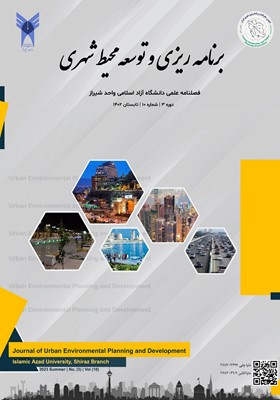-
-
List of Articles
-
Open Access Article
1 - Investigating the function of environmental advertising in urban spaces and its effect on promoting social resilience in Tehran city
Abbas Mohammadiyan Mohammadreza Ghaedi Alireza Biabannavard Sarvestani -
Open Access Article
2 - fehrest
-
Open Access Article
3 - Investigation and analysis of effective indicators on Smart housing in Shiraz city
Hamid-Reza Rakhshaninasab Massoud Charrahi Mojtaba Soleimani Damaneh -
Open Access Article
4 - Feasibility of health tourism capacities in Maragheh city with emphasis on sustainable urban development
Ali Azar Roghayeh Saidi -
Open Access Article
5 - A new look at the function of the street: providing a conceptual model of High Streets for All approach (Case Study: comparing Imam Khomeini Street and Foroughi Street in Tabriz)
Mana Vahidbafandeh Javad Imani Shamloo Melika Fadavi -
Open Access Article
6 - Measuring of residents' satisfaction with the quality of housing in urban neighborhoods with the approach of spatial justice: The case study on District 2 of Tehran
Ali Hosseini Norika Yolyeh San Vansan -
Open Access Article
7 - Investigating the effects of resilience indicators and formulating effective strategies on eco-oriented sustainability (Study case: Faizabad neighborhood of Kermanshah city)
Mirsalar Habibi seyedali Nouri seyedjamalodin daryabari -
Open Access Article
8 - Developing the Conceptual Model of Local Empowering of Informal Settlements Using Fundamental Point of View
majid javadi nima jahanbin Arman Heidari Omran Kohzadi Seifabad
-
The rights to this website are owned by the Raimag Press Management System.
Copyright © 2021-2025







